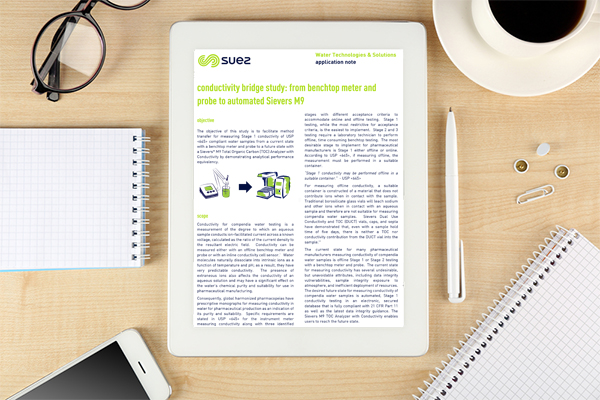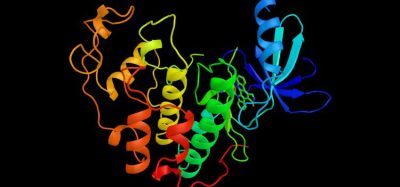Application note: Conductivity bridge study – from benchtop metre and probe to automated Sievers M9
Posted: 29 March 2019 | SUEZ | No comments yet
This application note discusses the desired future state for measuring conductivity of compendia water samples and how the Sievers M9 TOC Analyzer with Conductivity enables users to reach this state.
The objective of this study is to facilitate method transfer for measuring Stage 1 conductivity of USP <645> compliant water samples from a current state with a benchtop metre and probe to a future state with a Sievers* M9 Total Organic Carbon (TOC) Analyzer with Conductivity by demonstrating analytical performance equivalency.
Conductivity for compendia water testing is a measurement of the degree to which an aqueous sample conducts ion-facilitated current across a known voltage, calculated as the ratio of the current density to the resultant electric field. Conductivity can be measured either with an offline benchtop metre and probe or with an inline conductivity cell sensor.
Related content from this organisation
Related topics
Analytical techniques, Drug Manufacturing, Impurities, Lab Automation, Lab Equipment, Manufacturing, Technology










